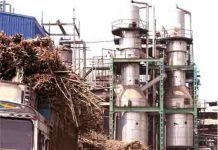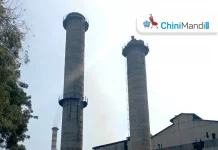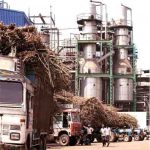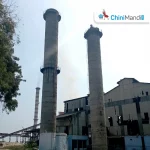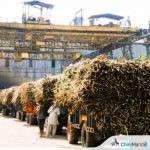India has made significant strides in its ethanol blending program, achieving a blending rate of 13.9% during the ethanol year 2023-24. This progress is a testament to the country’s commitment to reducing its dependence on fossil fuels and promoting sustainable energy sources. With sugar consumption reaching 290 lakh metric tons (MT) against a production of 330 lakh MT, the nation is well-positioned to leverage its agricultural output for further advancements in ethanol production. As India looks beyond 2025, the strategic planning for ethanol blending above 20% becomes crucial. This initiative not only aims to enhance energy security but also to support the agricultural sector, reduce greenhouse gas emissions, and promote economic growth. The roadmap for achieving higher ethanol blending levels will involve scaling up production capacities, optimizing supply chains, and ensuring regulatory support. Additionally, consumer awareness and industry collaboration will play pivotal roles in the successful implementation of this ambitious target. By focusing on these strategic areas, India can pave the way for a cleaner, more sustainable future, while also bolstering its energy independence and economic resilience.
CHALLENGES FOR ACHIEVING ETHANOL BLENDING ABOVE 20%:
Achieving higher ethanol blending levels, such as above 20%, presents several challenges that need to be addressed strategically:
1) Feedstock Availability: Ensuring a consistent and sufficient supply of feedstock, such as sugarcane and corn, is crucial. Variability in agricultural output due to weather conditions, pests, and diseases can impact feedstock availability.
Infrastructure Development: Expanding ethanol production capacity requires significant investment in infrastructure, including new distilleries and storage facilities. Additionally, the transportation and distribution network must be upgraded to handle increased ethanol volumes.
2)Technological Advancements: Developing and adopting advanced technologies for efficient ethanol production is essential. This includes improving fermentation processes, enhancing yield, and reducing production costs.
Regulatory and Policy Support: Clear and supportive government policies are necessary to encourage investment and ensure a stable market for ethanol. This includes subsidies, tax incentives, and mandates for ethanol blending.
3)Economic Viability: The cost of ethanol production must be competitive with fossil fuels. Fluctuations in global oil prices can affect the economic attractiveness of ethanol blending.
4) Environmental Concerns: While ethanol is considered a cleaner fuel, its production can have environmental impacts, such as water usage and land use changes. Sustainable practices must be implemented to mitigate these effects.
5) Consumer Acceptance: Higher ethanol blends can affect vehicle performance and fuel efficiency. Educating consumers and ensuring that vehicles are compatible with higher ethanol blends is crucial for widespread adoption.
6) Supply Chain Management: Efficiently managing the supply chain from feedstock production to ethanol distribution is complex. Coordination among various stakeholders, including farmers, producers, and distributors, is essential.
Addressing these challenges requires a coordinated effort from the government, industry, and research institutions. By focusing on these areas, India can successfully achieve its higher ethanol blending targets and move towards a more sustainable energy future.
REQUIREMENT OF SUFFICIENT SUGARCANE AVAILABILITY: Currently, the average yield of sugarcane in India stands at approximately 85 metric tons per hectare, with a total of 5.6 million hectares under cultivation. To achieve ethanol blending above 20% post-2025, it is crucial to ensure sufficient availability of sugarcane. This necessitates strategic planning to enhance land productivity. By adopting advanced agricultural practices, improving irrigation efficiency, and utilizing high-yielding cane varieties, we can significantly boost the per hectare yield. Such measures will not only support the ethanol blending targets but also contribute to the overall sustainability and profitability of the sugarcane industry.
TO INCENTIVISE SUGARCANE CULTIVATORS FOR MORE SUGARCANE PRODUCTION BY ENHANCEMENT IN LAND PRODUCTIVITY: To incentivize sugarcane cultivators for increased production and enhanced land productivity, several strategies can be implemented:
- Financial Incentives-
Subsidies and Grants: Providing financial support for adopting advanced farming techniques and technologies can reduce the initial investment burden on farmers1.
Minimum Fair & Remunerative Price (FRP): Ensuring a cost effective fair and remunerative price for sugarcane can encourage farmers to invest more in their crops
- Adoption of Green Technologies-
Sustainable Farming Practices: Promoting the use of green technologies such as intercropping, green manuring, and bio-fertilizers can improve soil health and crop productivity.
Water Management: Implementing efficient irrigation systems like drip irrigation by announcing nationwide programs, can optimize water use and enhance crop yields and reduce the cost of production.
- Research and Development-
High-Yield Varieties: Developing and distributing high-yield and disease-resistant sugarcane varieties can significantly boost productivity.
Biotechnological Innovations: Utilising biotechnologies to improve sugarcane’s resistance to environmental stresses and enhance growth can lead to higher yields.
- Training and Education-
Farmer Training Programs: Conducting regular training sessions on modern farming techniques and sustainable practices can empower farmers with the knowledge to increase productivity.
Extension Services: Providing extension services to offer on-field guidance and support can help farmers implement best practices effectively.
- Infrastructure Development-
Storage and Processing Facilities: Developing adequate storage and processing facilities can reduce post-harvest losses and ensure better returns for farmers.
Transportation Networks: Improving transportation infrastructure can facilitate the timely and efficient movement of sugarcane from farms to sugar factories.
- Policy Support-
Favourable Policies: Implementing policies that support sustainable sugarcane farming and provide incentives for adopting advanced technologies can drive productivity improvements.
Crop Insurance: Offering comprehensive crop insurance schemes can protect farmers against losses due to adverse weather conditions.
Export Opportunities: Promoting export opportunities for sugar and ethanol can create additional revenue streams for farmers.
Linking of FRP/MSP/ETHANOL PRICE: By liking of sugarcane price(FRP), Sugar price(MSP) and corresponding Ethanol prices, cane cultivators will be assured of timely and cost effective price for their sugarcane which will definitely incentivise them for cane cultivation in larger scale.
By focusing on these areas, India can enhance sugarcane productivity sustainably, benefiting both farmers and the broader economy.
POLICY DECISION FOR CONSOLIDATED FARMING AT VILLAGE LEVEL:
Consolidated farming at the village level can be a strategic solution to address the challenges posed by decreasing per capita land holdings due to family divisions. This approach can help overcome the limitations that small, fragmented farms face, such as difficulties in adopting mechanized farming and achieving mass production by enhancement in productivity of land.
Policy Decision for Consolidated Farming: Encouraging Cooperative Models: Implementing cooperative farming models where farmers pool their resources while retaining individual ownership can enhance productivity. This allows for shared use of machinery, bulk purchasing of inputs, and collective marketing of produce, leading to economies of scale.
Land Leasing and Contract Farming: Policies that facilitate land leasing and contract farming can help consolidate land for large-scale operations without altering ownership. Farmers can lease their land to larger entities or enter into contracts with agribusinesses, ensuring a steady income while benefiting from advanced farming techniques.
Village-Level Sourcing Models: Adopting village-level sourcing models, where agribusinesses place agents in communities to buy products directly from farmers, can reduce transportation costs and provide consistent market access1. This model supports smallholders by bringing the market closer to them and ensuring better prices for their produce.
Government Support and Incentives: Providing financial incentives, subsidies, and technical support for consolidated farming initiatives can encourage farmers to participate. This includes grants for purchasing machinery, training programs for modern farming practices, and subsidies for high-yield crop varieties.
Infrastructure Development: Investing in rural infrastructure, such as roads, storage facilities, and irrigation systems, is crucial. Improved infrastructure supports efficient farming operations and reduces post-harvest losses, making consolidated farming more viable.
By implementing these policies, we can enhance land productivity, support mechanized farming, and achieve mass production, all while respecting farmers’ ownership rights. This strategic approach will not only boost agricultural output but also improve the livelihoods of farmers and contribute to the overall sustainability of the agricultural sector.
PROMOTING THE ADOPTION OF HIGH YIELD SUGARCANE VARIETIES: Promoting the adoption of high-yield sugarcane varieties in India involves a multi-faceted approach that includes financial incentives, education, infrastructure development, and policy support. Here are some effective strategies:
- Financial Incentives-
Subsidies and Grants: Providing financial assistance for purchasing high-yield seeds and adopting advanced farming techniques can encourage farmers to switch to these varieties.
Fair and Remunerative Ensuring cost effective fair FTP for sugarcane can make the cultivation of high-yield varieties more attractive to farmers.
- Education and Training-
Farmer Training Programs: Conducting workshops and training sessions to educate farmers about the benefits and cultivation practices of high-yield varieties can increase adoption.
Extension Services: Offering on-field guidance and support through agricultural extension services can help farmers implement best practices effectively.
- Research and Development-
Development of New Varieties: Investing in R&D to develop high-yield, disease-resistant, and climate-resilient sugarcane varieties can provide farmers with better options.
Demonstration Plots: Establishing demonstration plots to showcase the performance of high-yield varieties can help build farmer confidence in these new options.
- Infrastructure Development-
Seed Distribution Networks: Creating efficient distribution networks for high-yield seeds can ensure that farmers have easy access to these varieties.
Irrigation Facilities: Developing and improving irrigation infrastructure can support the cultivation of high-yield varieties, which often require consistent water supply.
- Policy Support-
Favourable Policies: Implementing policies that support the adoption of high-yield varieties, such as subsidies for seeds and inputs, can drive widespread adoption.
Crop Insurance: Offering crop insurance schemes that cover high-yield varieties can protect farmers from potential losses and encourage them to invest more in cane cultivation.
Export Opportunities: Promoting export opportunities for sugar and ethanol can create additional revenue streams for farmers growing high-yield varieties.
By implementing these strategies, India can effectively promote the adoption of high-yield sugarcane varieties, leading to increased productivity and sustainability in the sugarcane sector.
IMPACT OF NEW AUTOMOTIVE TECHNOLOGIES ON USE OF ETHANOL BLENDED FUEL ABOVE 20%: The integration of new automotive technologies will have a significant impact on the use of ethanol-blended fuels and present challenges in achieving blending targets above 20% after 2025. Here are some key considerations:
- Electric Vehicles (EVs)-As the adoption of electric vehicles increases, the demand for traditional fuels, including ethanol-blended petrol, may decrease. This shift could reduce the overall market for ethanol, impacting the economic viability of higher blending targets.
- Autonomous Driving–Autonomous vehicles, which are often electric, will further reduce the reliance on ethanol-blended fuels. The focus on developing infrastructure for autonomous EVs might divert resources away from ethanol production and distribution1.
- Advanced Driver-Assistance Systems (ADAS)-While ADAS technologies improve vehicle safety and efficiency, they do not directly impact fuel type. However, the integration of these systems in new vehicles, which are increasingly electric, could indirectly reduce the demand for ethanol-blended fuels.
- Hydrogen Fuel Cells-The development of hydrogen fuel cell vehicles offers another alternative to ethanol-blended fuels. As hydrogen technology becomes more viable, it could compete with ethanol as a clean fuel option, potentially reducing the focus on ethanol blending.
- Vehicle-to-Everything (V2X) Communication–V2X technology enhances traffic management and vehicle efficiency, which can reduce overall fuel consumption. This reduction in fuel demand could impact the need for higher ethanol blending levels.
- Environmental and Economic Considerations-The environmental benefits of electric and hydrogen vehicles, such as zero emissions, may make them more attractive compared to ethanol-blended fuels, which still produce some emissions. Additionally, the economic incentives for developing EV and hydrogen infrastructure might overshadow those for ethanol production.
- Consumer Preferences–As consumers become more environmentally conscious, the preference for electric and hydrogen vehicles may grow, reducing the demand for ethanol-blended fuels. This shift in consumer behavior could pose a challenge to achieving higher ethanol blending targets.
- Regulatory and Policy Shifts-Government policies and regulations may increasingly favor electric and hydrogen vehicles over ethanol-blended fuels. Incentives for EVs and hydrogen fuel cells, along with stricter emissions standards, could impact the ethanol blending program.
While ethanol blending remains a crucial part of India’s strategy to reduce fossil fuel dependence, the rise of new automotive technologies presents both challenges and opportunities. Balancing the development of these technologies with the goals of the ethanol blending program will require careful planning and strategic policy decisions.
LONG TERM STRATEGIC PLANNING :
TIPS TO ACTION: To achieve the target of ethanol blending above 20% post-2025, long-term strategic planning from the government is essential. Here are some key actions and tips to stimulate ethanol production:
Expand Feedstock Base: Diversify the sources of ethanol production beyond sugarcane to include other biomass like rice straw, corn cobs, and agricultural residues. This reduces dependency on a single crop and ensures a steady supply of raw materials.
Incentivise Farmers: Provide financial incentives and subsidies to farmers for growing ethanol-producing crops. This can include higher procurement prices for ethanol feedstocks and subsidies for adopting high-yield crop varieties.
Promote Cooperative / Consolidated Farming: Encourage cooperative farming models to consolidate land holdings, allowing for more efficient and mechanized farming practices. This can increase productivity and reduce costs.
Invest in Infrastructure: Develop rural infrastructure such as roads, storage facilities, and irrigation systems to support efficient farming and reduce post-harvest losses.
Enhance Production Capacity: Offer interest subvention schemes and financial support for setting up new ethanol production plants and expanding existing ones. This includes modernizing sugar mills to produce ethanol more efficiently for which soft loam facilities are required to be provided.
Regulatory Support: Simplify regulations to facilitate the free movement of ethanol across states and ensure a stable and long term policy environment that encourages investment in ethanol production.
Public-Private Partnerships: Foster collaborations between the government, private sector, and research institutions to innovate and improve ethanol production technologies.
Awareness and Training: Conduct awareness campaigns and training programs for farmers and ethanol producers on best practices and new technologies in ethanol production.
By implementing these strategic actions, the government can stimulate ethanol production, ensuring the successful achievement of the 20% blending target post-2025. This will not only reduce dependency on fossil fuels but also promote sustainable agricultural practices and economic growth.
COORDINATED ACTIONS FROM AUTOMOBILE INDUSTRY: To achieve the target of ethanol blending above 20% post-2025, the development of suitable automobile industry technologies is crucial. This will not only support the use of higher ethanol blends but also result in significant foreign exchange savings. Here are some key points to include in your article:
Development of Automobile Industry –
Technologies for Ethanol Blended Fuel :The transition to higher ethanol blends, such as E20 and beyond, necessitates advancements in automobile technologies. These developments are essential to ensure vehicle compatibility, performance, and longevity while using ethanol-blended fuels.
Here are some strategic actions and benefits:
Engine Modifications: Vehicles need to be equipped with engines that can handle the higher corrosiveness and different combustion characteristics of ethanol. This includes using ethanol-compatible materials for fuel lines, gaskets, and other components1.
Fuel System Upgrades: Enhancements in fuel injection systems and fuel pumps are required to manage the higher oxygen content and lower energy density of ethanol1. These upgrades ensure efficient fuel delivery and combustion.
Emission Control Technologies: Advanced emission control systems are necessary to meet stringent environmental regulations while using ethanol-blended fuels. This includes catalytic converters and particulate filters designed for ethanol combustion.
Hybrid and Flex-Fuel Vehicles: Promoting the development and adoption of hybrid and flex-fuel vehicles that can run on varying ethanol blends will provide flexibility and reduce dependency on fossil fuels.
Research and Development: Continuous R&D efforts are needed to innovate and improve ethanol-compatible vehicle technologies. Collaboration between automobile manufacturers, research institutions, and the government is vital.
Economic and Environmental Benefits-
Foreign Exchange Savings: Achieving a 20% ethanol blend requires approximately 1000 crore liters of ethanol, which can save around 40,000 crore INR in foreign exchange annually. This saving will increase with higher ethanol blends.
Reduced Emissions: Ethanol-blended fuels produce fewer greenhouse gases and pollutants compared to pure gasoline, contributing to cleaner air and a healthier environment.
Energy Security: Increasing ethanol production and usage reduces dependency on imported oil, enhancing national energy security1.
By focusing on these technological advancements and strategic actions, India can successfully achieve its ethanol blending targets, leading to substantial economic and environmental benefits.
In conclusion, achieving ethanol blending above 20% post-2025 is not just a technological and agricultural challenge but a strategic imperative for India’s energy security and environmental sustainability. By enhancing land productivity, promoting consolidated farming, and developing advanced automobile technologies, policy formation for linking of FRP of sugarcane, MSP of sugar and corresponding Ethanol prices at a time, we can pave the way for a greener future. Government policies and incentives will play a crucial role in stimulating ethanol production and adoption. The economic benefits, including significant foreign exchange savings, increase in income of cane cultivators, sustainability of sugar factories and reduced emissions, further underscore the importance of this initiative. As we fuel the future with strategic planning and innovation, India can lead the way in sustainable energy solutions, ensuring a prosperous and environmentally friendly tomorrow.
P.G. Medhe is the former Managing Director of Shri Chhatrapati Rajaram Sahakari Sakhar Karkhana Ltd and sugar industry analyst. He can be contacted at +91 9822329898.



